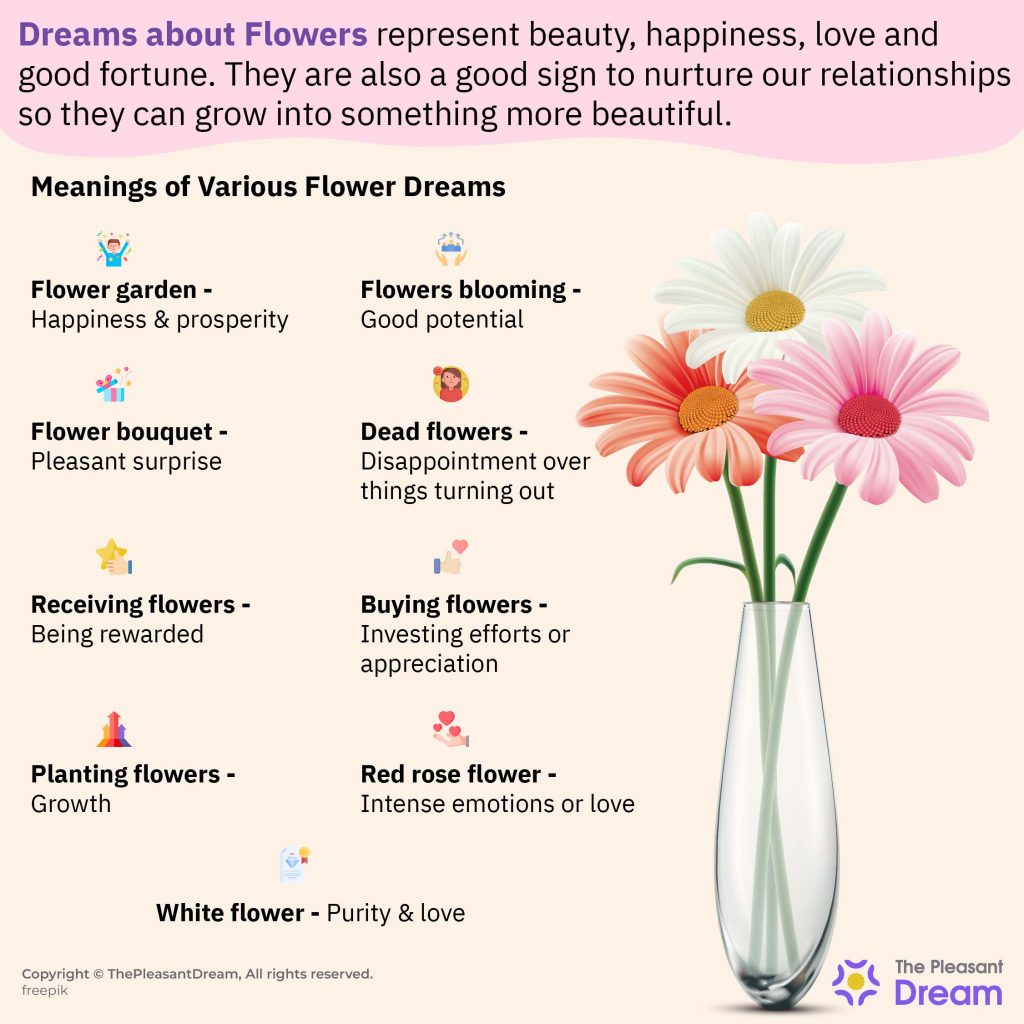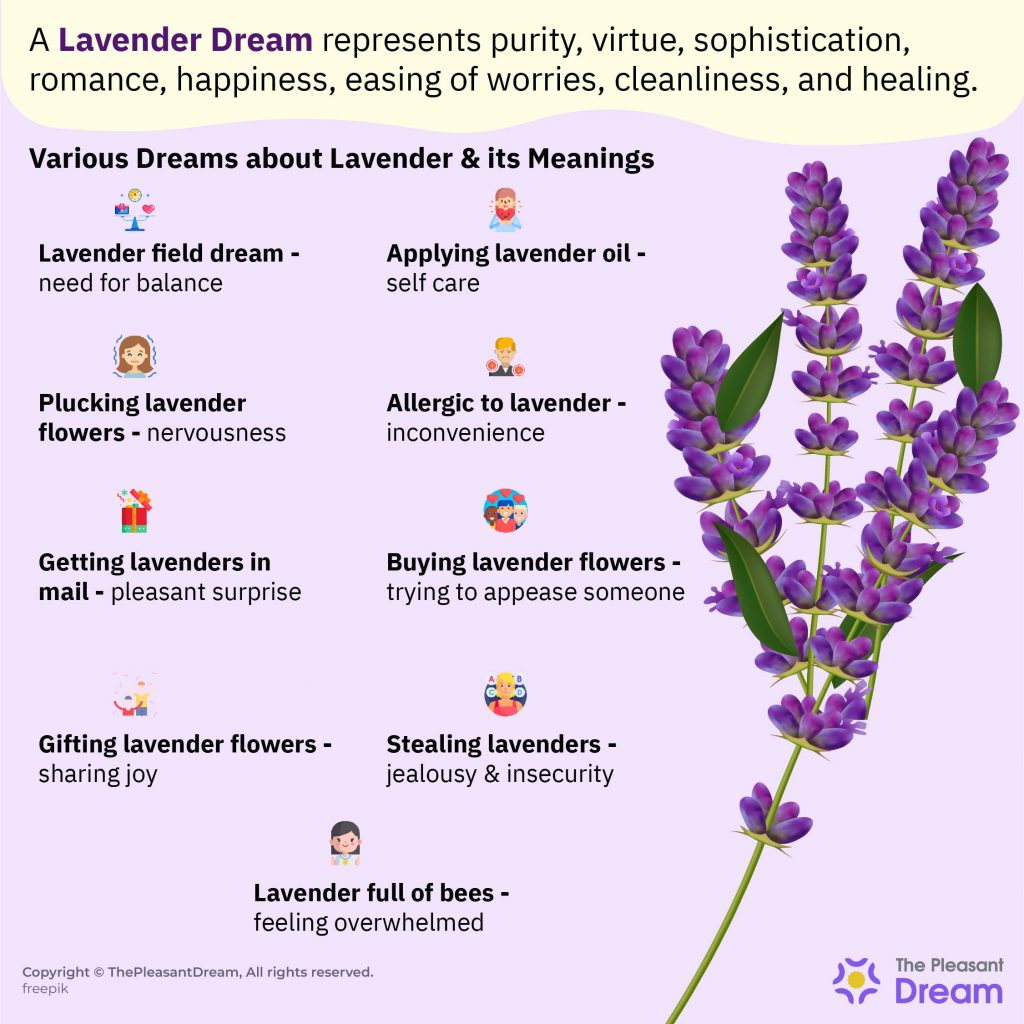Unraveling the Mysterious Messages – What Your Dream Flowers Symbolize

Hey there, dream voyager. Have you ever woken up, feeling the lingering touch of a dream, trying to decode its cryptic message? Dreams have fascinated humans for centuries, acting as gateways to the subconscious. And if you’ve ever dreamt of flowers, well, my dear friend, you’re in for a treat.
In this riveting article, we will delve into the netherworld of dreaming to reveal the profound symbolism behind flowers. Buckle up, as we explore the garden of your mind, unearthing petals of wisdom that will leave you in awe.
Prepare to unlock the secrets of flower symbolism in dreams as we uncover the hidden meanings, emotions, and messages that these botanical wonders bring to fantasy. By understanding dreams filled with flowers, gain insights into your subconscious thoughts and experience personal growth.
So, if you’re ready to embark on this mystical journey of self-discovery and spiritual enlightenment, fasten your seatbelt and prepare to be amazed. Join us as we explore dream interpretation through the language of flowers.
Meaning of Flowers in Dreams
In dreams, flowers symbolize the dreamer’s emotions and desires. Each flower has its own interpretation, which can be influenced by the dream’s context. Understanding the meaning of flowers in dreams offers insights into one’s thoughts and feelings.
For instance, roses symbolize love and romance. Dreaming of roses may signify a desire for love and passion. The rose’s color adds meaning too. A red rose signifies deep romantic love, while a white rose symbolizes purity and innocence.
Another common dream flower is the daisy, which symbolizes simplicity, innocence, and new beginnings. Dreaming of daisies could suggest desiring a fresh start or a simpler life. It could also indicate a need to reconnect with one’s youthful and carefree nature.
The lily, on the other hand, is often associated with spirituality and renewal. Seeing or receiving lilies in a dream may indicate a need for emotional or spiritual healing or a desire for growth and transformation. The purity and delicacy of lilies can also suggest a need for inner peace and harmony.
Sunflowers, tulips, and daffodils also have their own symbolic meaning in dreams. Each flower represents different emotions and desires. Flower dreams are personal, so it’s crucial to consider the specific flower, color, and emotions felt during the dream when interpreting its meaning.
The Significance of Dreams
Dreams have always fascinated cultures worldwide. They are viewed as mysterious and deeply symbolic, holding hidden meanings that offer insight into our subconscious desires and fears. Throughout history, people have sought guidance and solace in their dreams, looking for answers and wisdom.
In ancient times, dreams were believed to bear messages from the divine or the supernatural. They were regarded as a bridge to the spiritual realm, providing a means to connect with higher powers and attain spiritual enlightenment. Priests and scholars were entrusted with interpreting the hidden significance present within the apparently haphazard imagery and sensations.
One common symbol in dreams is flowers, often associated with beauty, growth, and renewal. In dreams, they can represent new beginnings, hope, or a desire for self-improvement. The type and color of the flower can also have significance. For example, a red rose may symbolize passionate love or desire, while a white lily might signify purity and innocence.
Dreams are highly personal and can vary widely. What’s significant in one dream can have a different meaning in another. Approach dream interpretation with an open mind and consider the unique context of your dreams. Keeping a dream journal and reflecting on the symbols and patterns can help develop a deeper understanding.
Symbols have been used throughout history to convey a wide range of meanings and emotions. A symbol is a visual representation that carries a deeper significance and can communicate complex ideas without the need for words. One of the most common symbolic representations is the flower. Flowers are often associated with beauty, growth, and renewal. They can elevate our mood and generate a positive response. Different types of flowers also have specific meanings attached to them. For example, the red rose symbolizes passionate love and desire, while the white lily represents purity and innocence. Overall, the use of symbols in communication and art is an effective way to convey emotions and concepts without relying solely on language.
How to Remember Your Dreams

Remembering your dreams can provide insight and help you understand your thoughts and emotions on a deeper level. While dreams can be forgotten easily, there are techniques you can try to improve your dream recall:
1. Keep a dream journal: Place a notebook and pen by your bedside, record your dreams as soon as you wake up. Write down fragments or images you remember, even if they seem unrelated or nonsensical. Over time, you may notice patterns or recurring themes.
2. Set an intention: Before going to sleep, tell yourself that you want to remember your dreams when you wake up. This simple act can help improve your dream recall abilities.
3. Develop a bedtime routine: Establishing a routine signals to your brain that it’s time to sleep, making it easier to fall into a deep sleep state where dreams are more likely. Try to go to bed and wake up at consistent times to regulate your sleep patterns.
4. Visualize and reflect: Take a few moments before falling asleep to visualize yourself in a dreamlike state and reflecting on past dreams. This exercise may stimulate your dream recall abilities and increase your chances of remembering your dreams upon waking.
5. Practice lucid dreaming: Lucid dreaming involves becoming aware that you are dreaming. By practicing techniques like reality checks and mindfulness exercises, you can increase your awareness within dreams and enhance your ability to remember them.
Remembering dreams takes practice and patience. Don’t be discouraged if you don’t see immediate results. By incorporating these techniques into your routine, you can improve dream recall abilities and unlock the hidden meanings behind your unconscious thoughts and desires.
Techniques for Dream Interpretation

Dreams are often seen as containing hidden meanings and messages from the unconscious mind. While interpreting dreams can be personal and individual, there are common techniques to uncover their symbolism and messages.
A common technique in dream interpretation is analyzing symbols. Symbols can take different forms in dreams, like objects, animals, or people, and they carry personal meaning. For instance, a flower symbolizes beauty, growth, or new beginnings. Understanding the context of symbols can offer valuable insights into their significance.
Another technique for interpreting dreams is to keep a dream journal. By recording dreams upon waking, it’s easier to remember and analyze the elements and symbols contained within them. Journaling can identify recurring themes and uncover connections between different symbols or experiences.
Dreams can often be interpreted by considering the emotions experienced within them. For example, a dream of being chased or falling may indicate anxiety or a lack of control in waking life. Paying attention to one’s emotional state within a dream provides valuable insights into what the dream may communicate.
Exploring the unconscious mind can be achieved through techniques like meditation or creative expression. Engaging in activities that promote relaxation and self-reflection, such as journaling, drawing, or quiet contemplation, facilitates a deeper connection with the unconscious and enhances understanding of dream symbolism.
Dream interpretation is a personal process that can be improved through various techniques. Analyzing symbols, keeping a dream journal, exploring emotions, and cultivating a deeper connection with the unconscious mind all offer different ways to delve into the rich symbolism and messages that dreams hold.
Impact of Dreams on Daily Life
Dreams have a powerful impact on our lives. They provide insight into our subconscious mind and reveal our hopes, fears, and desires. Whether remembered or not, dreams influence our thoughts, emotions, and actions.
Dreams also help with problem-solving and creativity. Many ideas and inventions have been inspired by dreams. Our dreaming brain can make connections and see things differently, offering solutions that our waking mind may overlook. Paying attention to our dreams and analyzing their symbols can lead to breakthrough ideas and insights.
Dreams have an emotional impact on our daily life. We can wake up feeling happy, joyful, or relaxed after a pleasant dream. Conversely, a nightmare can leave us stressed, anxious, or fearful. These emotions can linger, affecting our mood and behavior. It is essential to pay attention to our dream emotions and address any negative feelings that arise.
Additionally, dreams can influence our decision-making process. A vivid dream may feel like a sign or message, guiding our choices and actions in the waking world. However, caution should be exercised when making decisions based on dreams. Logical reasoning is necessary to ensure these decisions align with our values and goals.
Dreams have a profound impact on our daily life. They can spark creativity, evoke emotions, and influence decision-making. By paying attention to dreams and reflecting on their meaning, we can gain valuable insights and navigate daily life consciously.
Tips for Harnessing Dreams for Personal Growth
Discovering and decoding the symbolic language of dreams can unlock the depths of your unconscious mind and harness its wisdom for personal growth. By understanding the meanings behind common dream symbols and exploring their messages, you gain insights into your own life and emotions. On your journey of self-discovery and exploration, keep these points in mind:
– Pay attention to recurring symbols: They represent core aspects of your subconscious seeking resolution.
Create a dream ritual: Establish a nightly routine to prepare your mind for dreams. This could include relaxation exercises, meditation, or setting intentions before sleep. Consistency in your dream ritual will improve dream recall and facilitate understanding of their content. Now that you have these tips, apply them to your own life. Reflect on the key points and consider integrating them into your routine. By harnessing the power of dreams, gain valuable self-awareness, guidance, and growth.
Dreams serve as cryptic messengers from your subconscious mind. Embrace them and let their wisdom transform you on this journey of self-discovery. Unlock the hidden realms of your dreams to gain profound insights and navigate personal growth.


